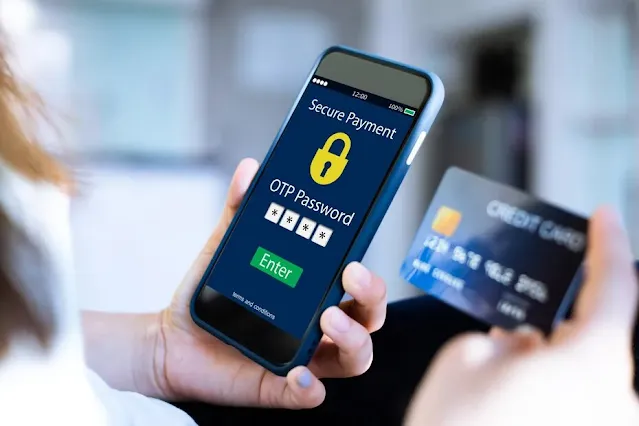
The fast-paced technology of ecommerce and digital transactions has developed so rapidly in the last decade as to pose serious questions about the security of the online world. A major concern for both businesses and consumers alike, secure online payments remain the biggest challenge for those eager to develop a more effective way to get the money flowing.
With a continuing surge in online shopping, bill payments, and other financial transactions over the Internet, the necessity of ensuring these operations are safe cannot be overstated. The threats of fraud, data breaches, and cyber-attacks loom large, and having a robust system to combat these challenges is essential. It is in this context that solutions such as secure payment methods from Noda have come to the fore, offering both convenience and security in one package.
Understanding the Risks
Before delving into the solutions, it is crucial to comprehend the risks associated with online transactions. Here are some of the most prevalent threats:
- Phishing Attacks: Cybercriminals often use fake emails or websites that resemble legitimate entities to deceive users into providing sensitive data.
- Data Breaches: Even large corporations are not immune to attacks where massive amounts of user data, including financial information, are stolen.
- Man-in-the-middle Attacks (MITM): Here, the attacker secretly intercepts and potentially alters the communication between two parties.
- Unsecure Networks: Using public Wi-Fi to carry out transactions can expose sensitive data to unauthorized interceptors.
Building a Secure Online Payment System
Creating a secure online payment system requires a multi-faceted approach that provides a watertight solution. Here are some foundational elements:
- Encryption: This is the first line of defense. It ensures that the data, when transmitted between the user and the server, is coded in such a way that only the intended recipient can decode it.
- Two-Factor Authentication (2FA): A step beyond simple username-password combinations, 2FA requires users to validate their identity using two separate methods, typically something they know (password) and something they possess (a one-time code sent to their phone).
- Secure Socket Layer (SSL) Certification: A benefit of websites with SSL certifications is that they have an added layer of encryption, ensuring the security of all the data transferred.
- Regular Updates and Patches: Software needs to be regularly updated to fix vulnerabilities. Outdated systems are a goldmine for cybercriminals.
- PCI DSS Compliance: The Payment Card Industry Data Security Standard is a set of security standards designed to ensure all companies that accept, process, store, or transmit credit card information maintain a secure environment.
Factor One: Choosing the Right Payment Gateway
A payment gateway is the mediator between merchants and customers, facilitating the authorization of card payments for online retailers. The right payment gateway not only streamlines transactions but also ensures that they are conducted safely. The following should be considered concerning a payment gateway:
- Focus on Encryption and Tokenization: These ensure the card data is scrambled and secure. Tokenization replaces sensitive data with unique symbols, keeping the essential information hidden.
- Identify the Presence of Fraud Prevention Tools: These can include CVV verification, geolocation, and even AI-driven fraud detection mechanisms.
- Check for Integrated Payment Methods: A good gateway should offer various payment methods, from credit cards to digital wallets, providing flexibility to customers while maintaining security.
- Downtime and Reliability: A secure payment gateway should be reliable, ensuring that transactions are smooth even during high traffic.
- User Experience: Security should not come at the cost of usability. A straightforward and user-friendly interface ensures customers will never be deterred from completing their purchases.
The Role of Digital Wallets and Modern Payment Solutions
The advent of digital wallets and modern payment solutions has added another layer to online payment security. These methods, which store payment information and allow users to make transactions without inputting their card details repeatedly, offer both convenience and enhanced safety.
By acting as a buffer between the user’s financial details and the merchant, digital wallets ensure sensitive data is not exposed during the transaction. They also frequently employ advanced biometric verifications, like fingerprint or facial recognition, which adds another layer of security.
Educating the End-User: A Vital Component
While businesses need to adopt robust security measures, it is equally vital to educate the end-user. Often, the weakest link in the security chain is human behavior rather than technology. Users should be made aware of the best practices:
Using Strong Passwords: Encourage the use of complex passwords, changed regularly.
- Avoiding Public Wi-Fi for Transactions: Unsecured networks can easily be compromised.
- Verifying Website Authenticity: Before entering any payment information, users should check for the 'https' in the URL and the padlock symbol.
- Being Wary of Suspicious Emails and Offers: If an offer seems too good to be true or if an email asks for sensitive information, users should approach with caution.
- Regularly Checking Account Statements: Any unauthorized transactions should be reported immediately.
Final Thoughts
In the digital era, the significance of secure online payments is indisputable. As cyber threats grow in sophistication, the countermeasures need to be equally robust and probing. Solutions that prioritize security without compromising on user experience are one of the best choices.
For businesses, investing in such systems is not just about protecting transactions; it is about preserving trust and reputation, and ultimately ensuring sustained growth in an increasingly digital world.